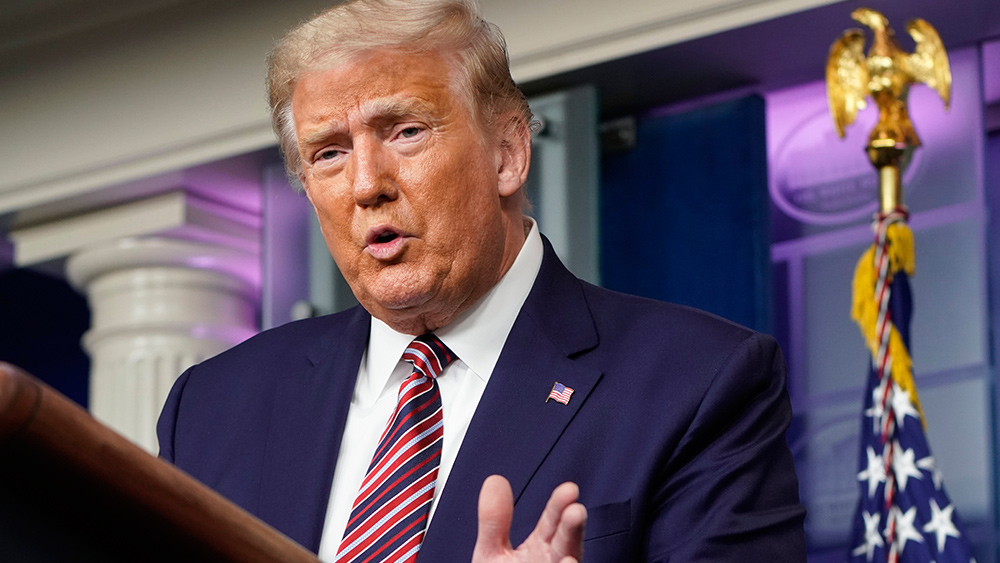
“Patients pay very high prices, and they have for many years – although we brought it down, first time in 51 years – with the costs adding up to hundreds or even thousands of dollars per year, per patient,” said Trump at a White House press conference.
“The drug companies don’t like me too much, but we had to do it,” he added. “I just hope they keep it. I hope they have the courage to keep it.” The president was referring to the fact that powerful lobbyists from big pharma will most likely put pressure on people to reverse these changes. (Related: Trump just learned that cozying up to Big Pharma always leads to betrayal.)
“Most favored nation rule” can save Americans billions
There are two main points to Trump’s new drug policies. The first is known as the “most favored nation rule,” and it will tie what Medicare pays for medications with the lowest price paid by a group of “economically advanced countries.” Trump said that this rule will end the “global freeloading” of Big Pharma on patients.
“Until now, Americans have often been charged more than twice as much for the exact same drug as other medically advanced countries,” said Trump. “We would be having a drug – identical drug, same company – and we’d pay many times the price of what the drug would sell for in certain countries.”
The pharmaceutical industry is not a big fan of the most favored nation rule. They have criticized it and even attempted to smear it by calling it a socialist policy.
But Trump has not been deterred, and the rule will come into effect on Jan. 1 of next year. The White House believes it can save Medicare recipients over $28 billion over seven years through lower copays.
The most favored nation rule has received bipartisan support. Even Democratic nominee Joe Biden and House Speaker Nancy Pelosi have favored this approach for lowering drug prices.
Cutting out pharma middlemen will reduce patient spending by 30 percent
The second policy will require drug manufacturers for brand name pharmacy medications to provide Medicare enrollees with rebates that would otherwise have gone to their insurers and their middlemen – known as “pharmacy benefit managers.” The rule will also change how doctors and hospitals are paid for administering certain drugs, which will remove any incentive to using medications that are more expensive.
“Drug companies provide large discounts on the price of prescription medicines, including nearly $40 billion in rebates to Medicare Part D plans last year alone. Yet often, middlemen stop those discounts from going to patients,” said Trump. “Today’s action ends this injustice and requires that these discounts go directly to the people.”
Critics say ending rebates to middlemen will increase premiums. The Congressional Budget Office says this will increase taxpayer costs by $177 billion over 10 years. The Trump administration countered by saying that the rule can provide Americans with 30 percent savings. This policy will also take effect on Jan. 1, 2022.
Along with these two new policies, Trump also opened legal pathways for American citizens to import medicines abroad.
The president announced that he is putting a stop to the 2006 Unapproved Drugs Initiative, which prevented the use and sale of drugs that have not been approved by the Food and Drug Administration (FDA). This, Trump said, has allowed pharmaceutical companies to find older generic drugs and to obtain market exclusivity on them, with certain corporations increasing prices on these drugs, sometimes by 1,000 or 5,000 percent.
While prices for brand-name medication have continued to rise, Trump has been able to slow it down during his tenure. Under his administration, the FDA has also been tasked with prioritizing the approval of new generic drugs, which will cost Americans less.
“Together, these reforms will save American patients many, many billions of dollars every single year,” said Trump.
Finally, Trump unveiled a new Medicare drug plan that caps the cost of insulin at $35 a month. It is available for people to sign up to during open enrollment.
Learn more about what the Trump administration is doing to crack down on the excesses of the pharmaceutical industry, such as their exceptionally high prescription drug prices, by reading the latest articles at BigPharmaNews.com.
Sources include:
Please contact us for more information.






















